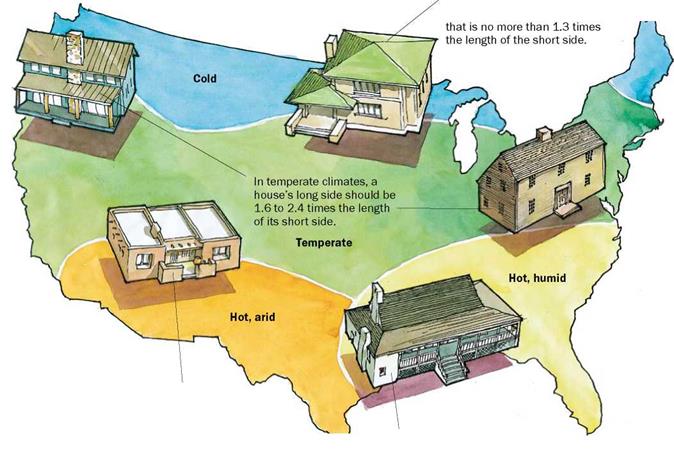Learn More about the Principles of Siting a House
For more information on siting principles, additional detailing, and solar-design strategies for houses, as well as the mathematical formulas required to analyze these strategies for their potential energy savings, check out the second edition of Sun, Wind & Light: Architectural Design Strategies by G. Z. Brown and Mark DeKay (John Wiley & Sons Inc., 2000).
Although out of print, another good resource available at used-book stores and libraries is Climatic Building Design: Energy – Efficient Building Principles and Practice by Donald Watson and Kenneth Labs (McGraw – Hill, 1993). Both books contain a wealth of helpful charts, meteorological data, and examples of solar siting and building design.
M. Joe Numbers is an architect with Gile-Buck & Associates in Boise, Idaho.
 Guidelines for Shaping an Energy-Efficient House
Guidelines for Shaping an Energy-Efficient House
A house with a high ratio of interior space to exterior surface costs less to heat and cool. In very cold or very hot areas, then, houses should be more square than rectangular. In temperate areas, shape is not critical, but in humid areas, a long, narrow house allows for cross ventilation.
![]()

 In hot, arid climates, a house whose long side is 1.3 to 1.6 times the length of its short side offers the best ratio of cool indoor space to exterior wall area.
In hot, arid climates, a house whose long side is 1.3 to 1.6 times the length of its short side offers the best ratio of cool indoor space to exterior wall area.






Leave a reply